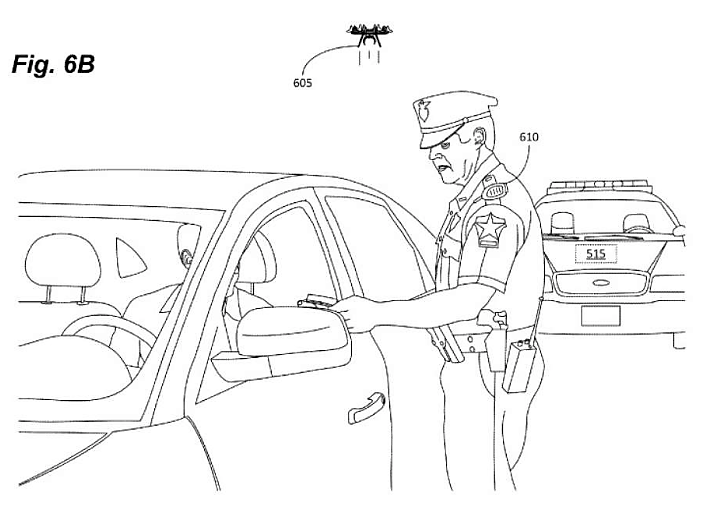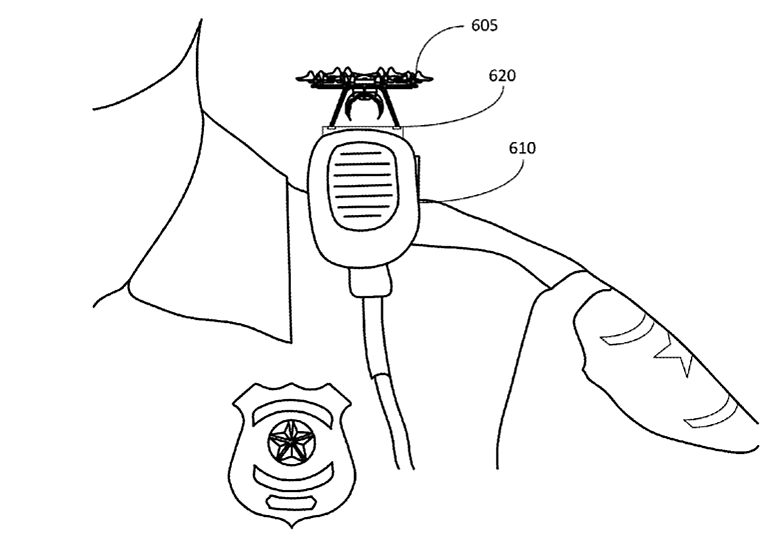Last July, Dallas police used a robot to kill the man who fatally shot five Dallas-area police officers. Shortly after the shooting I noted that new technologies, such as robots, should prompt lawmakers to find ways to make the face-to-face interactions citizens have with officers safer and less frequent. A recent Amazon patent reveals how new technologies can play a role in improving traffic stops, one of the most common citizen-police encounters.
Amazon Technologies, Inc. recently secured a patent for small shoulder-mounted police drones. The patent abstract explains that, “The techniques and systems can include routines to provide enhanced support for police during routine traffic stops.”
Drones like the one detailed in the Amazon patent could help improve traffic stops. Drones would allow police to examine a pulled-over vehicle before approaching in person. This increased situational awareness would help police officers, providing them with valuable information about how many people are in the car and whether the driver or any passengers have their hands in sight. As drone technology improves it’s likely that police will be able to use similar drones to issue commands.
If appropriate accountability policies are enacted, these small drones could serve as useful tools in police misconduct investigations. Drone footage of the Philando Castile and Samuel DuBose shootings, for example, would have been helpful to investigators.
But despite the potential for these small drones being useful in misconduct investigations and helping police during traffic stops, citizens may be concerned about the impact such drones could have on their civil liberties. Having a small drone buzzing around your car during a traffic stop may be unnerving, but unless the drone is outfitted with sophisticated surveillance tools it’s unlikely that it will prompt a robust Constitutional challenge.
If these small Amazon drones are equipped with traditional cameras and don’t enter a car during a traffic stop, then they will only be capturing images of material in “plain view.” Nonetheless, citizens should be wary of small police drones being outfitted with surveillance technology that could raise constitutional issues, such as thermal scanners.
New technologies such as drones and body cameras will undoubtedly play an increasingly prominent role in law enforcement. Small drones like the one described in Amazon’s patent could help make routine traffic stops safer for officers and citizens. However, as the ongoing debates about body cameras have demonstrated, these new technologies can only serve as tools for worthwhile criminal justice reform if they’re governed by good policies. It’s not hard to see how small drones could help police and citizens during traffic stops. But as police drones become more common we shouldn’t forget that they can serve as platforms for a host of technologies that threaten civil liberties.


